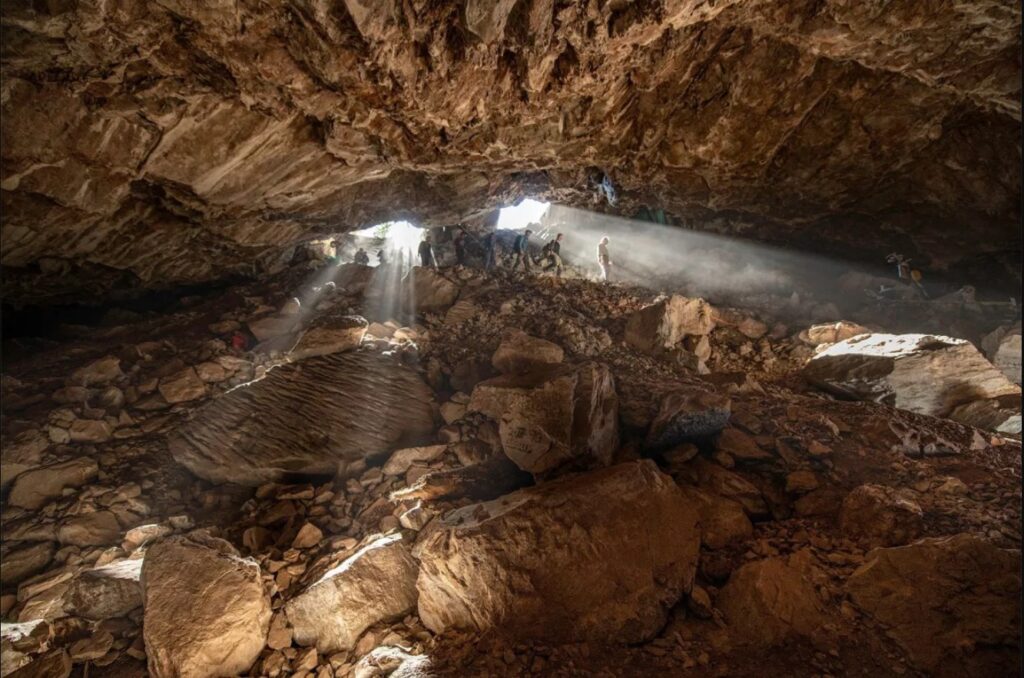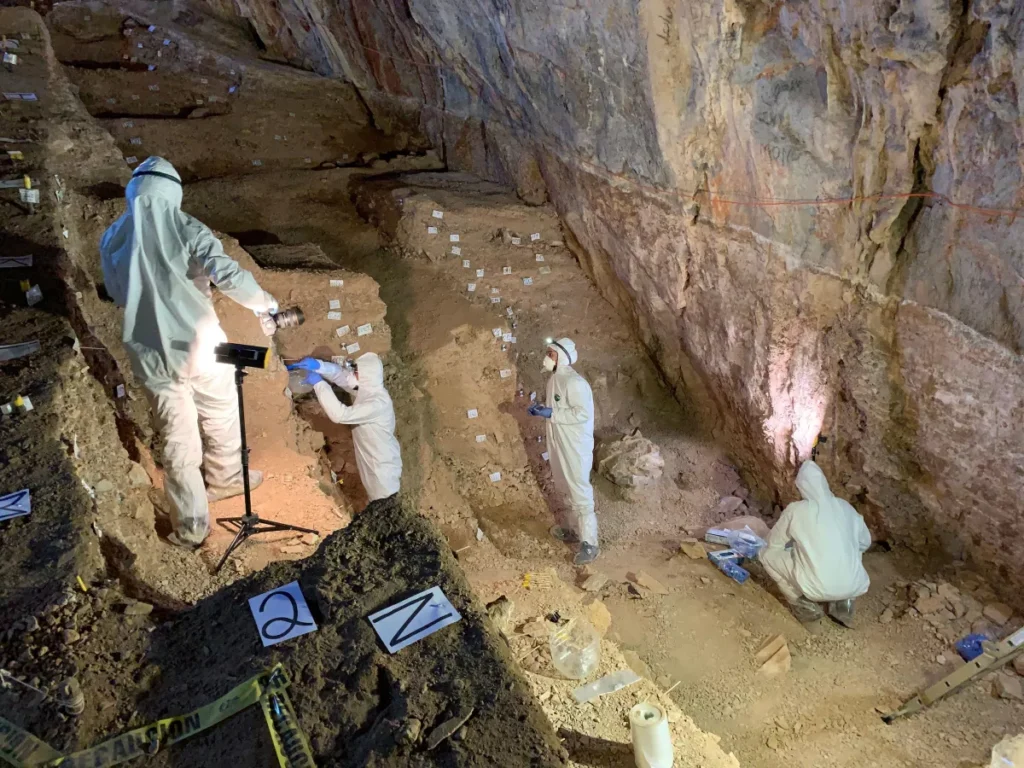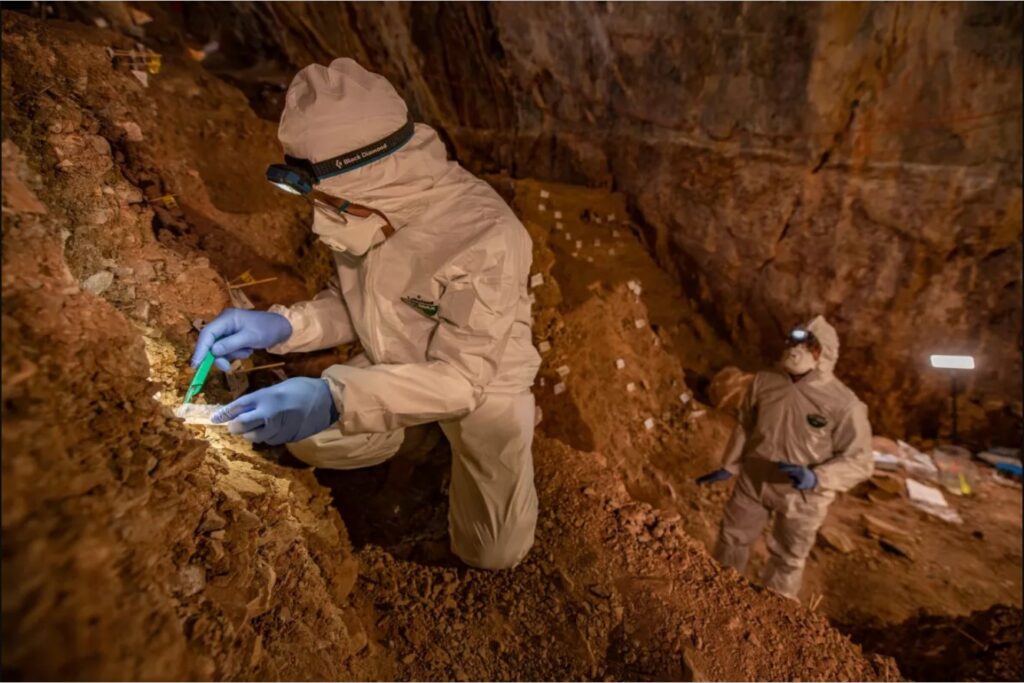New Discoveries Imply Man Arrived in the Americas 26,500 Years Ago
The early inhabitants of North America left behind precious few clues of their existence – a footprint here, a weapon and a mummy there – leading scientists to wonder exactly when the first people arrived on the continent.
Now, two new studies report a stunningly early date: Humans may have been living on the continent at least 30,000 years ago.

That would mean that the first North Americans may have arrived before the Last Glacial Maximum (LGM), between about 26,500 and 19,000 years ago, when ice sheets covered much of what is now the northern U.S. and Canada.
However, humans didn’t become widespread on the continent until about 14,700 years ago, when the population boomed.
“These are fascinating studies,” said William Harcourt-Smith, a paleoanthropologist at Lehman College and the American Museum of Natural History, both based in New York City, who wasn’t involved with the research.
“It’s now very clear that modern humans were in the Americas far earlier than we used to think. There have been other sites and scholars suggesting this, but it is rigorous studies like this that really seals the deal.”
In one study(opens in new tab), archaeologists analyzed a remote cave in northwestern Mexico containing human-made stone tools that are up to 31,500 years old, according to dating models. This would push back dates for human dispersal into North America to as early as 33,000 years ago, the researchers said.

In the other study(opens in new tab), archaeologists took already-published dates from 42 archaeological sites in North America and Beringia and plugged them into a model that analyzed human dispersal. This model found an early human presence in North American dating to at least 26,000 years ago.

Both studies, published on July 2020 in the journal Nature, go against the “Clovis-first” model, a decades-old hypothesis that early humans arrived in the Americas via Beringia as the last ice age was ending, about 13,000 years ago.
However, scientists have been chipping away at this model for years, as even older sites, including the newly analyzed cave in Mexico, are discovered and dated.
Cave in the mountains
In 2010, researchers found ancient stone tools in Chiquihuite Cave, a site in the mountains that sits 9,000 feet (2,740 meters) above sea level and about 3,200 feet (1,000 m) above the valley floor, the researchers wrote in the study.
The terrain at the cave is challenging to navigate – the roof at the cave’s entrance collapsed about 12,000 years ago, sealing it off – so the team did excavations about 165 feet (50 m) inside the cave.
It was so hard to travel to and from the cave, that the archaeologists ended up living at the site for two seasons – a total of 80 days – in 2016 and 2017.
During that time, the team worked steadily, collecting bone, charcoal and sediment. They used two techniques to date the roughly 1,900 stone tools in the cave: radiocarbon dating and optically stimulated luminescence (OSL).

With OSL, researchers assessed when quartz grains in the sediment had last been exposed to sunlight. To avoid biasing the results, “when we extracted the samples, it had to be in complete darkness,” said study lead researcher and director of the excavation, Ciprian Ardelean, an archaeologist at the Autonomous University of Zacatecas.
The radiocarbon dating and the OSL dates matched, suggesting that the dating was accurate, Ardelean said. Then, the researchers divided the layers into two main sections – a younger layer dating to between 16,600 and 12,200 years ago, which contained about 88% of the stone tools, and an older layer that was about 16,600 to 33,000 years old, which held about 12% of the stone tools.
Ardelean noted that the stone tools show clear signs of human sculpting, including signs that ancient humans hit one type of rock with another to make a sharp, pointed edge, known as a flake.
“You can also see repeated blows on the same spot from different angles when it was harder for them to separate the flakes and they are trying again and again,” Ardelean told Live Science.
However, a hunt for genetic material in the cave yielded only plant and animal DNA (including junipers, firs and pines, bats, bears, voles, deer mice and marmots), but not human DNA.
The tools were of a style never seen before by archaeologists, but this style didn’t change much over the thousands of years. Also, there weren’t many tools given how long the cave was used, so it appears that the cave was used sparsely, he said.
More evidence of human activity may lie closer to the entrance of the cave, but that area would be challenging to excavate because of the collapsed entrance, he said.
In addition, the team found evidence of sulfur, potassium and zinc, elements that could be signs of human activities, such as butchering animals or urination, although it’s also possible that these elements were left by carnivores using the cave, Ardelean said.
Chiquihuite Cave is one of the few analyzed sites indicating that humans lived in North America before the beginning of the LGM, said Justin Tackney, an associate researcher in the Department of Anthropology at the University of Kansas, who was not involved in the study.
“If the authors are correct, Chiquihuite Cave would represent a very significant discovery in our field,” because the site was used up to about 30,000 years ago, Tackney told Live Science.
“This would then lead to questions of which physical routes would these humans have taken to get that far south at such an early date, particularly during the maximal extent of the ice sheets.”
These dates are so early, “the focus now will be on the veracity of those few older lithic artifacts,” Tackney said.
However, the analysis of all of these stone tools shows that the humans who used the cave were flexible enough to deal with the elements so high above sea level, Harcourt-Smith said.
What’s more, “it shows that Mexico is an important region to be focusing on in relation to understanding the earliest humans in the Americas,” Harcourt-Smith told Live Science.
